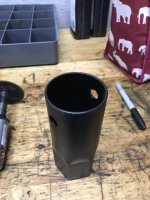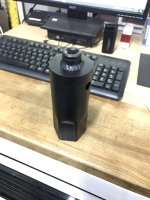LRDONE
Well-known member
98 D1 - For tightening the wheel bearing nut and lock nut, Does 45ftlbs seem too tight? Or should I go off of feel and not worry too much about it? I'm chasing a grinding vibration on deceleration at higher speeds that becomes constant at 70mph and above. Accompanied by and intermittent unwanted ABS actuation. I just want to make sure I have these bearings set properly and Pro-demand isn't being very clear. Thanks.
** I've got a 2 inch lift and do not have caster correct arms so I know the diff could be coming out of line on sudden decel which I do know I've got a little bit of that going on. But the constant noise at 70mph plus concerns me.
** I've got a 2 inch lift and do not have caster correct arms so I know the diff could be coming out of line on sudden decel which I do know I've got a little bit of that going on. But the constant noise at 70mph plus concerns me.



